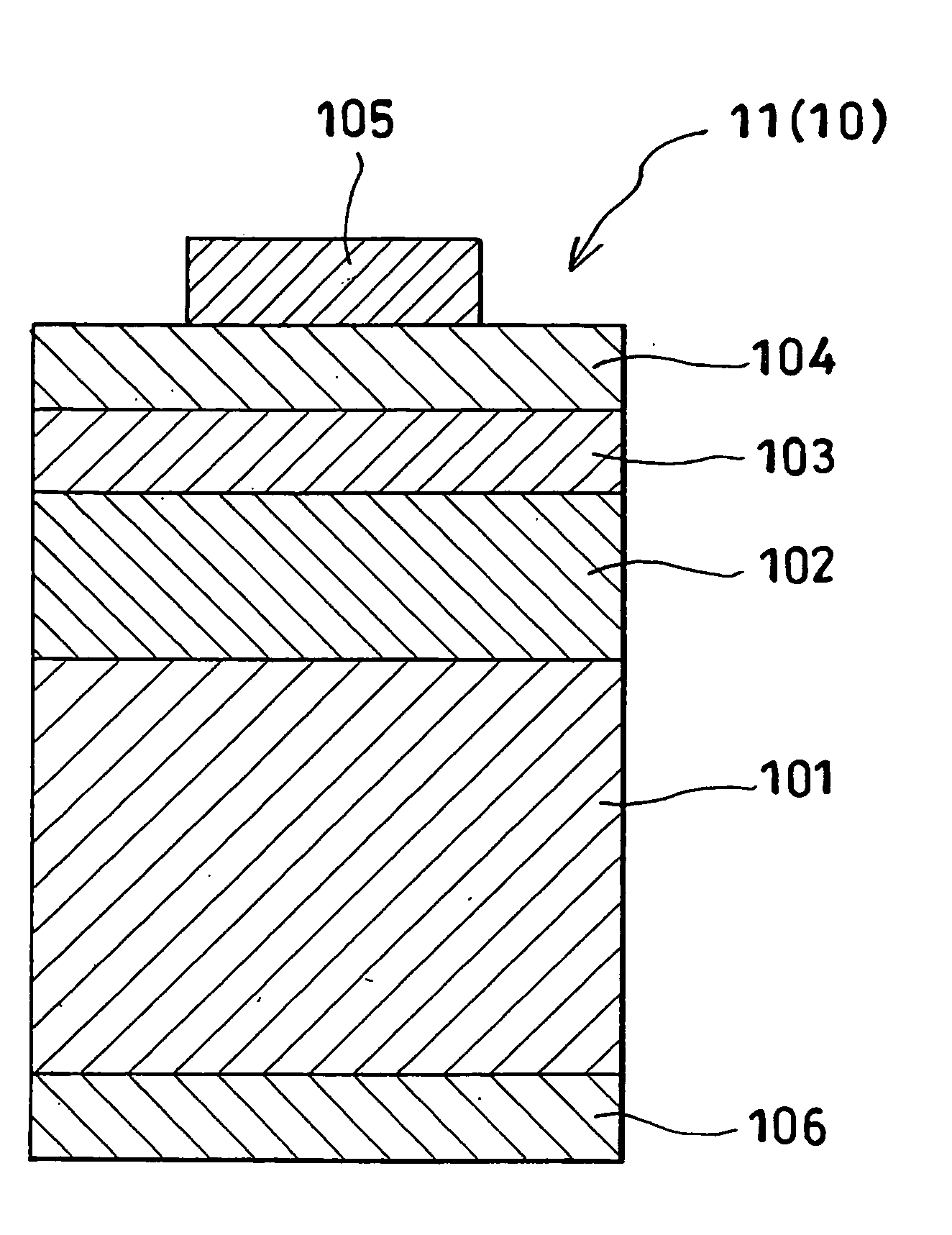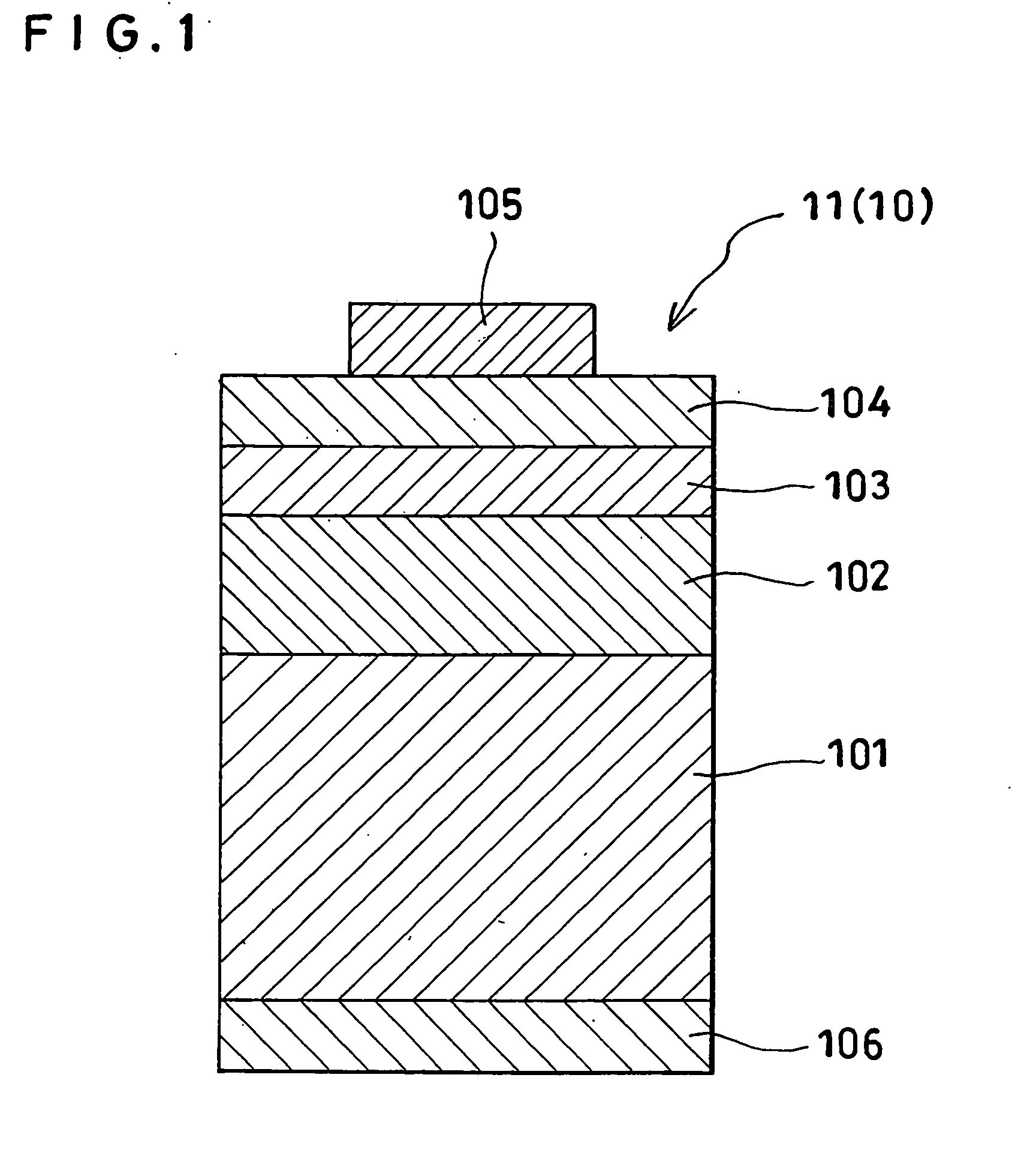Boron Phosphide-Based Semiconductor Light-Emitting Device
a technology of boron phosphide and light-emitting devices, which is applied in the manufacture of semiconductor/solid-state devices, semiconductor devices, electrical devices, etc., can solve the problems of difficult actual formation of semiconductor layers and the inability to form cubic semiconductors in stable states, and achieve excellent crystallinity, high emission intensity, and sufficient layer thickness
- Summary
- Abstract
- Description
- Claims
- Application Information
AI Technical Summary
Benefits of technology
Problems solved by technology
Method used
Image
Examples
examples
[0044] The present invention will next be described in detail, with reference to fabrication of a boron phosphide-based LED including a (111) boron phosphide (BP) layer formed on a (111) silicon single-crystal substrate and a (0001) gallium indium nitride light-emitting layer formed on the (111) BP layer.
[0045]FIG. 1 schematically shows a cross section of a stacked structure employed for fabricating an LED according to the present invention having a double-hetero (DH) junction structure. In FIG. 1, a stacked structure 11 is provided for fabricating an LED chip 10.
[0046] The stacked structure 11 was formed by sequentially stacking on a phosphorus-doped n-type (111) silicon (Si) single-crystal substrate 101 an undoped n-type (111) boron phosphide lower cladding layer 102, a multi-quantum well structure light-emitting layer 103 including repeatedly (3 times) stacked an n-type (0001) gallium indium nitride (Ga0.90In0.10N) well layer and a (0001) gallium nitride barrier layer, and an u...
PUM
 Login to View More
Login to View More Abstract
Description
Claims
Application Information
 Login to View More
Login to View More - R&D
- Intellectual Property
- Life Sciences
- Materials
- Tech Scout
- Unparalleled Data Quality
- Higher Quality Content
- 60% Fewer Hallucinations
Browse by: Latest US Patents, China's latest patents, Technical Efficacy Thesaurus, Application Domain, Technology Topic, Popular Technical Reports.
© 2025 PatSnap. All rights reserved.Legal|Privacy policy|Modern Slavery Act Transparency Statement|Sitemap|About US| Contact US: help@patsnap.com


